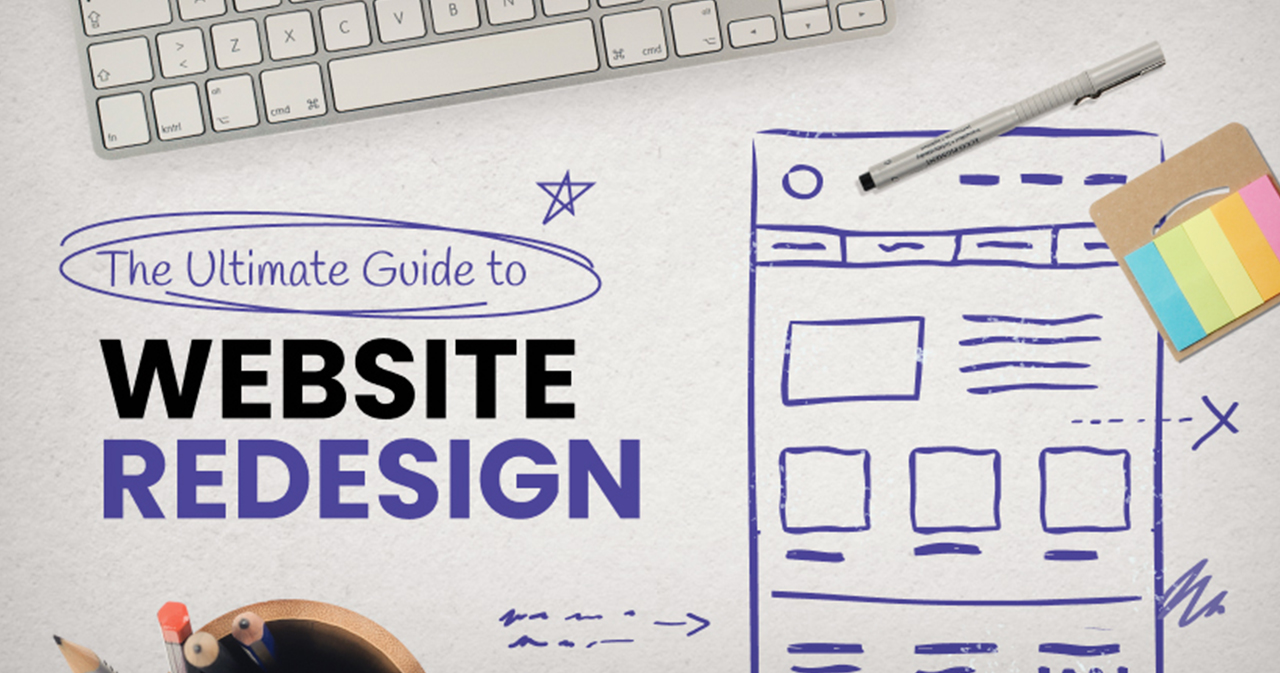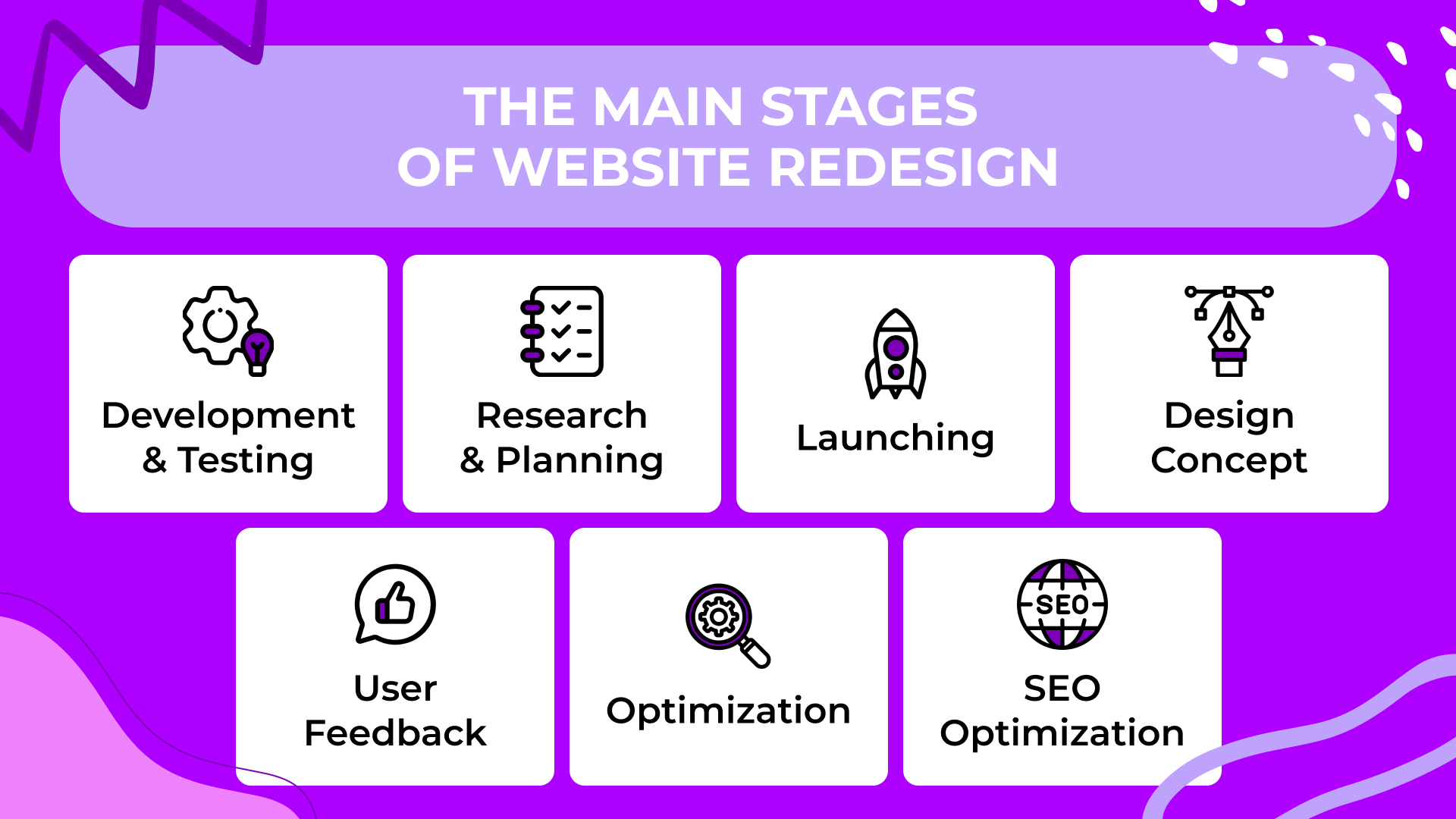In today’s digital age, a website is often the first impression a potential customer has of your business. A well-designed and user-friendly website is essential for attracting and retaining visitors. If your website is outdated or not performing as well as you’d like, it may be time for a redesign.

Understanding the Need for a Website Redesign
Before diving into the redesign process, it’s crucial to understand why your website needs a revamp. Here are some common indicators:
- Outdated design: If your website’s design looks dated and doesn’t align with current trends, it can create a negative impression.
- Poor user experience: If your website is difficult to navigate or slow to load, visitors may become frustrated and leave.
- Decreased traffic: If you’ve noticed a decline in website traffic, it could be due to a poorly designed or outdated website.
- Low conversion rates: If your website isn’t converting visitors into customers, it’s likely not optimized for conversions.
- Mobile incompatibility: In today’s mobile-first world, your website must be responsive and look great on all devices.
Planning Your Website Redesign
A successful website redesign requires careful planning. Here are the key steps involved:
- Set clear goals: Determine what you want to achieve with your redesigned website. This could include increasing traffic, improving conversions, or enhancing brand awareness.
- Conduct a website audit: Analyze your current website’s strengths and weaknesses to identify areas that need improvement.
- Create a redesign strategy: Develop a comprehensive plan outlining the scope of the redesign, timeline, budget, and responsibilities.
- Define your target audience: Understand who you are trying to reach with your website and tailor your design and content accordingly.
- Research competitors: Analyze your competitors’ websites to identify best practices and potential areas for differentiation.
Designing Your Website
The design of your website is crucial for creating a positive user experience. Here are some key considerations:
- User interface (UI): Ensure your website is easy to navigate and understand, with clear calls to action.
- User experience (UX): Design your website with the user in mind, making it intuitive and enjoyable to use.
- Visual design: Choose a visually appealing design that reflects your brand identity and resonates with your target audience.
- Color scheme: Select colors that are visually appealing and evoke the desired emotions.
- Typography: Choose fonts that are easy to read and complement your overall design.
- Imagery: Use high-quality images and graphics to enhance your website’s visual appeal.
Developing Your Website
Once you have a design in place, it’s time to develop your website. This involves building the website’s structure, coding the HTML, CSS, and JavaScript, and integrating any necessary functionality.
- Content management system (CMS): Consider using a CMS like WordPress or Drupal to make website management easier.
- Web development team: If you don’t have in-house expertise, hire a web development team to handle the technical aspects of the redesign.
- Accessibility: Ensure your website is accessible to people with disabilities by following accessibility guidelines.
Testing and Quality Assurance
Before launching your redesigned website, it’s essential to thoroughly test it to identify and fix any issues. Here are some key areas to test:
- Functionality: Ensure all features and links work as expected.
- Usability: Test the website’s usability to ensure it is easy to navigate and understand.
- Compatibility: Test the website on different browsers, devices, and screen sizes.
- Performance: Ensure the website loads quickly and performs well.
Launching Your Redesigned Website
Once you have completed testing and quality assurance, you can launch your redesigned website. Here are some tips for a successful launch:
- Create a launch plan: Develop a plan outlining the launch date, marketing activities, and monitoring strategies.
- Promote the launch: Use social media, email marketing, and other channels to promote the launch of your redesigned website.
- Monitor performance: Track key metrics such as website traffic, user behavior, and conversions to assess the success of the redesign.
- Gather feedback: Collect feedback from users to identify areas for improvement and make ongoing adjustments.
Ongoing Maintenance and Optimization
A website redesign is not a one-time event. It’s essential to maintain and optimize your website on an ongoing basis to ensure it continues to meet your goals. Here are some key areas to focus on:
- Content updates: Regularly update your website’s content to keep it fresh and relevant.
- Technical optimization: Ensure your website is optimized for search engines (SEO) to improve visibility.
- Security updates: Keep your website’s software and plugins up-to-date to protect against security threats.
- Performance optimization: Continuously monitor your website’s performance and make improvements as needed.
- User experience improvements: Gather user feedback and make changes to enhance the user experience.
Conclusion
A well-designed and user-friendly website is essential for success in today’s digital landscape. By following the steps outlined in this guide, you can effectively plan, design, develop, test, and launch a website that meets your goals and provides a positive experience for your visitors.










Add Comment